Info Type
View Option
Sort by Month
Sort by Category
Back
This text has been translated by auto-translation. There may be a slight difference between the original text and the translation. (Original Language: 日本語)
2024/1/5 - 2024/2/4 / 千葉県 佐倉市 / Other

| Venue | National Museum of Japanese History, General Exhibition, Room 3, Special Exhibition Room |
|---|---|
| Address | 285-8502 千葉県 佐倉市 城内町117 |
| Date | 2024/1/5 - 2024/2/4 |
| Time | 9:30 minute(s) - 16:30 minute(s) |
- [Time detail]
・ Last admission 30 minutes before closing.
・ Closed : Jan 9 ( Tue ), 15 ( Mon ), 22 ( Mon ), 29 ( Mon )
- [Getting here]
By train】
・ 15 min. walk or 5 min. bus ride from Keisei Sakura Station on Keisei Electric Railway
・ 15 min. bus ride from Sakura Station on East Japan Railway
[By car]
・ 15 min. from Yotsukaido IC or Sakura IC on Higashi-Kanto Expressway
- [Venue detail]
National Museum of Japanese History, General Exhibition, Room 3, Special Exhibition Room
117 Jonouchi-cho, Sakura-shi, Chiba, Japan
Room3 Special Exhibition "Newly Arrived Nomura Collection
Please enjoy the passion of a collector who cherished even a small piece !.
- [Contact]
- 050-5541-8600 ( Hello Dial )
- [Registrant]国立歴史民俗博物館
- [Language]日本語
- [TEL]050-5541-8600
- Posted : 2023/12/11
- Published : 2023/12/11
- Changed : 2023/12/11
- Total View : 319 persons
- Find local business with Town Guide
-
- Hormone × Sake can be enjoyed at "Charco...

-
Hormone × Sake can be enjoyed at "Charcoal Grill ・ Wan" Many people order beer or sour when they hear the word "hormone", but sake also goes well with it. Each table is equipped with a duct so that yo...
(04) 7092-0330炭火焼・輪
-
- Cultivation of herbs and edible flowers ...
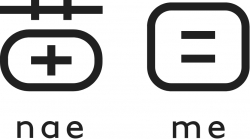
-
Opened in April 2023, naeme farmers stand is both a direct sales stand and a café, serving a menu featuring herbs and edible flowers produced without agricultural chemicals. The lunch menu is differen...
(050) 1551-0964苗目
-
- We are a stylish used car dealership loc...

-
A used car dealership located a little far from the city center, with a somewhat laid-back and relaxed atmosphere. Used car sales ・ Buying ・ We are dealing with non-life insurance ! We also have auto...
(0436) 37-1775YM.BASE
-
- Ramen restaurant with an addictive soup ...
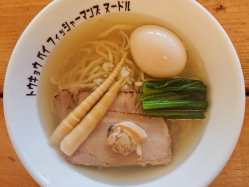
-
We are sure you will be captivated by the soup made with plenty of shellfish caught in Kisarazu ✨ We have a parking lot with 15 spaces available.
(0438) 53-7937TokyoBay Fisherman's Noodle
-
- A restaurant with dishes that are a litt...
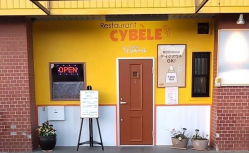
-
OPEN in Kimitsu City ! Western-style restaurant by an authentic chef with many years of experience in Yokohama, including hotel French cuisine and quite a few wedding banquet meals in Yokohama. Reason...
(0439) 32-1225レストラン シベール
-
- Why don't you spend a good time in Kamog...

-
How about a happy time with your friends at the sunken kotatsu seating ? We offer reasonable prices. Night time in Kamogawa at yakiya We look forward to seeing you at our restaurant. We have a wi...
(04) 7093-0121yakiya やきや
-
- Right in front of MARUKI POINT ! Surf st...
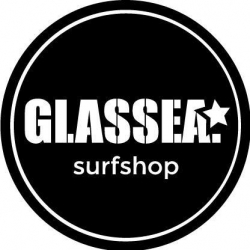
-
If you are thinking of starting surfing this year ! please come to GLASSEA! GLASSEA sells surfing goods and offers surf school. If you are a beginner, or if you are having a hard time improving your s...
(04) 7093-7874GLASSEA surfshop
-
- <わらび餅専門店 門藤 市原店> You can enjoy not...
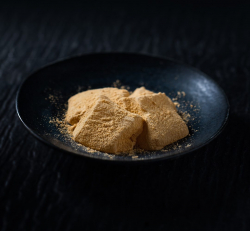
-
<わらび餅専門店 門藤 市原店> You can enjoy not only the elegant and luxurious Honwarabi Mochi "Zeimi", but also strawberry latte, roasted tea latte, coffee latte, matcha latte, and other strawbaked rice cak...
(0436) 63-6023わらび餅専門店 門藤 市原店
-
- We have participated in many tournaments...

-
Why don't you start martial arts in an official size ring ? Beginners ・ Children ・ Women are welcome! We welcome you to join us only for muscle training. Our dance club is also active under the gui...
(04) 7094-5181KAMOGAWA男塾
-

-
(0438) 63-4378大衆中華ホサナ
-
- Kitchen car now open in Higashiota, Kisa...

-
We sell pizza by weight ! It is popular as a "souvenir" when you are hungry or when you are invited to a friend's house. Please try our ultimate lemonade full of vitamins ♪ I trained for 3 years un...
(080) 4676-4828cucina Ragazza Carina
-
- A unique cafe that uses blueberries ・ fi...

-
Five minutes by car from the first Kanada Interchange after the Aqualine, Please feel free to relax in our unique cafe that uses blueberries ・ figs ・ vegetables, etc. grown on our own farm to make yo...
(0438) 41-1216果実農園 カインの里
-
- Enjoy our Italian cuisine filled with th...

-
Restaurant Appetito is the best place to eat authentic Italian food in Kamogawa. We have been making pasta, pumpkin soup, and other dishes with carefully selected ingredients to satisfy our customers....
(04) 7093-3467レストラン アペティート
-
- At Gakkou Kobo Kisarazu, we believe that...

-
■ Creating the ability to learn ・ Fostering independence ■ At Gakkou Kobo Kisarazu School, we consider "academic ability = the ability to learn" and focus on career guidance ・ not only for entrance e...
(0438) 42-1623学力工房 木更津教室
-
- We renovate your garden and other areas ...

-
We have been in business for 50 years and are now in our third generation. At Saito, we put our customers' needs first and offer plans that will satisfy them. Please feel free to contact us. ・ Free Es...
(090) 6113-5078株式会社斉藤








This special exhibition introduces three newly-discovered kosode-sabi pasteboard Byeongpungs, traces the footsteps of Morris and looks at activities of Japanese American immigrants during the period between World War II and the end of World War II.
[Admission]
Adults 600 yen, college students 250 yen, high school students and younger free
*The general exhibition is also available.
*People with disabilities may enter the museum free of charge with a caregiver upon presentation of a disability certificate.
*High school and university students must show their student ID card.
*Please show your museum ticket stub and you can enter the Botanical Garden until ( 16 : 00 ) on the same day.
Show the stub from the Botanical Garden and get a discount for the Museum admission on the same day.